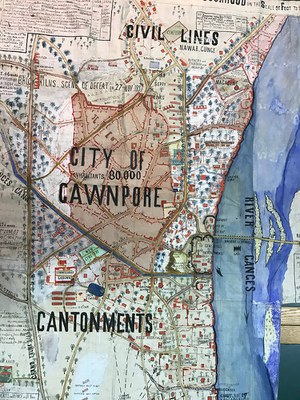
British colonial rulers in India cobbled together an idiom of sovereignty that teetered on the verge of outright domination. In moments of crisis, this domination took the form of power as terror exercised by state functionaries, even when not fully authorized by the colonial state. To understand this phenomenon, I turn to a well-known monument built to commemorate the loss of British lives in the Sepoy Rebellion of 1857–1859. By studying the unmaking of the Kanpur (Cawnpore) Memorial Well Monument in the wake of Indian independence in 1947, I explore the notions of landscape, community, and rights that undergird the relation between political sovereignty and monument-making. The crisis of sovereignty precipitated by the Sepoy Rebellion and then Indian independence from British rule provide opportunities to examine the limits and core conditions of colonial sovereignty.
Swati Chattopadhyay is professor in the Department of History of Art and Architecture at the University of California, Santa Barbara. An architect and architectural historian, she is the author of Representing Calcutta: Modernity, Nationalism, and the Colonial Uncanny (2005) and Unlearning the City: Infrastructure in a New Optical Field (2012), and the coeditor (with Jeremy White) of City Halls and Civic Materialism: Towards a Global History of Urban Public Space (2014) and Critical Approaches to Contemporary Architecture (2019). She is currently completing two book projects, A Geography of Small Spaces and Nature’s Infrastructure: British Empire and the Making of the Gangetic Plains, 1760–1880. She is the founding editor of PLATFORM.